Integrating medical-dental insurance billing has become a hot topic in the dental industry. A central question is whether your practice should invest in an in-house medical billing system. While the potential benefits are enticing, it’s crucial to evaluate the decision carefully. This article outlines the key considerations to help you determine if implementing a medical-dental billing program is the right move for your practice.
Understanding the Basics: Is It Worth the Effort?
For a typical general dental practice, there may only be four to five true medical claims to file each month. These claims arise when a systemic link between a dental procedure and medical necessity has been established. With such a modest volume, diving headfirst into medical billing with significant financial and time investments may not make sense for every practice.
Start small. Conduct a survey to estimate your potential medical claims volume. Calculate the return on investment (ROI): how many claims will you need to cover your upfront costs? If the answer is only one or two claims per month, then moving forward might be a viable option. However, if the ROI is unclear or uncertain, consider a slower, more cautious approach with minimal startup costs.
Step 1: Organize Your Documentation
Documentation is the cornerstone of effective medical-dental billing. Begin by creating and saving well-structured note templates in the auto-notes section of your practice management software. Examples include:
- Letter of Medical Necessity
- Comprehensive Medical Exam Documentation
Ensure these templates are easy to use, customizable, and compliant with the SOAP format (Subjective, Objective, Assessment, Plan). The provider’s signature should be included to meet medical carrier requirements.
Step 2: Match Dental Codes to Medical Codes
Identifying and cross-referencing codes is another foundational step. Start by listing the dental procedure codes your practice uses most frequently—often found in the customized buttons or charting module of your practice management software. Next, match these dental codes to their corresponding medical CPT (Current Procedural Terminology) codes and ICD-10 (International Classification of Diseases) codes.
Online resources like icd10data.com can help you stay up-to-date with medical coding standards. For additional support, consider purchasing reference books that summarize commonly used CPT codes and provide a crosswalk to ADA dental codes. These resources simplify navigating the thousands of codes used in medical billing.
Step 3: Streamline Communication Within Your Team
Create a streamlined communication process to prevent errors and misunderstandings. One effective strategy is to develop an internal “superbill” equivalent—a modernized version of the routing slip or pegboard system. This tool ensures the entire team stays aligned, especially when documenting the patient’s chief complaint and treatment plan.
Step 4: Assess Your Software Needs
Your current practice management software may not fully support medical billing. Many systems allow only limited documentation or fail to meet the detailed coding requirements of medical carriers. Think of medical billing as painting a picture with codes—precision and clarity are essential.
If your software isn’t up to the task, consider these alternatives:
- Paper Claims: Purchase CMS-1500 claim forms (printed in red ink) from a specialty paper supplier. This format is required for medical claims.
- Affordable Software Solutions: Explore budget-friendly applications that include pre-formatted CMS-1500 claim forms.
- Carrier Portals: Use insurance carriers’ electronic portals to submit claims, track claims status, and inquire about billing and submitting medical claims.
Starting with these low-cost options can save you from committing to a separate medical clearinghouse, which operates differently from dental clearinghouses.
Step 5: Engage Your Team
A successful medical-dental billing program requires team buy-in. Every team member should understand the value of connecting oral and systemic health. Start by discussing medical issues that relate to dental care and sharing case examples during team meetings. Additionally, educating patients about the role of overall health in dental treatment can foster trust and improve case acceptance.
Final Thoughts
Implementing a medical-dental cross-coding system offers several benefits:
- Increased Case Acceptance: Patients are more likely to proceed with treatment when medical insurance offsets costs.
- Enhanced Marketing Opportunities: Advertise your practice’s ability to handle medical claims as a unique selling point.
- Expanded Services: Cross-coding allows you to offer a wider range of treatments, helping patients access the care they need.
- Competitive Advantage: In an ever-changing dental market, standing out from the competition is essential.
Launching an in-house medical-dental billing system can be transformative for your practice, but it requires thoughtful planning. By starting small, organizing documentation, and leveraging available resources, you can determine whether this approach aligns with your practice’s goals and patient demographics. If done correctly, medical-dental billing can boost revenue, enhance patient satisfaction, and position your practice for long-term success.

Becky Gerber has been a leader in the dental consulting community for more than 4 decades. In 2006, she started the Academy of Dental Practice Careers, a training institute for dental front office professionals. In 2013, the insurance courses were launched online to reach students nationwide. Recently, Portland, Oregon, has become the new site for the corporate office of the ADPC.
Through the years, Becky has collaborated and worked with some of the biggest consulting names in dentistry.
FMI: https://www.dentalpracticecareers.com
Read more by Becky Gerber:

